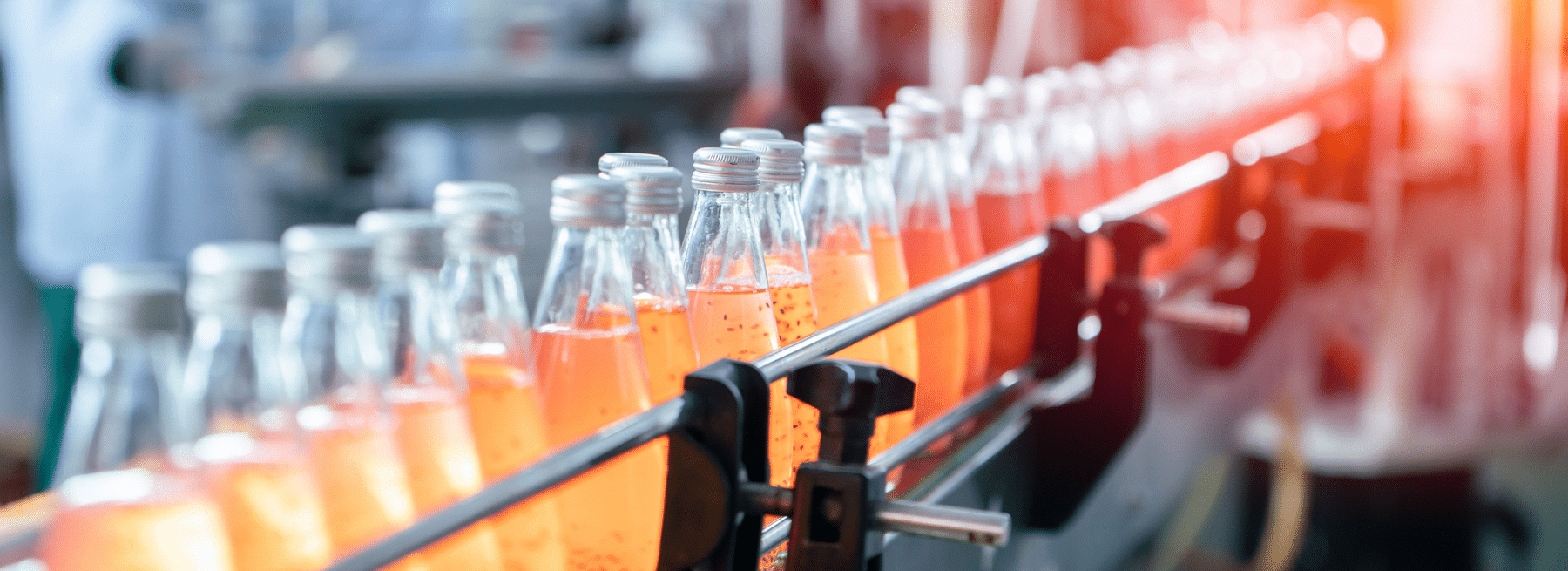The pandemic was hard to contend with as people worried about their families and loved one’s health and safety. Due to the stresses associated with the crisis, customers simply want to take a break from it with their favorite food and beverage. Unfortunately, many could not find their favorite treat as food and beverage facilities could not produce every product because they were not at full capacity.
It’s mainly due to the supply chain breakdown and labor shortage. Facilities had to make hard decisions about which products to focus on based on the number of workers available. Workers became sick, had to take care of sick family members, or were immunocompromised, which prevented them from going out in public. While the industry was shut down, management created new safety processes for a safer workplace. It took a long time before companies could return to full capacity. Some may still be struggling with a shortage of workers.
It’s unknown how long these problems will last, but one thing is for sure. The food and beverage industry is making security and safety a much higher priority.
The Need for Greater Security and Safety in Food and Beverage
Before the pandemic, the food and beverage industry had to follow strict food safety guidelines. That hasn’t changed. The same goes for their role in the supply chain. What has changed is that the supply chain remains fragile creating a challenge to catch up and return to pre-pandemic production. Besides, food and beverage facilities rely on products from others that affect their own business.
It’s created a huge problem of supply and demand. Costs have soared for food and beverage products as NextAdvisor reveals inflation hit a 40-year high in December 2021. As food and beverage costs increase, the industry to becomes more vulnerable to theft.
Organized crime gangs target items they can steal in bulk and resell for big profits. They also seek items that are hard to track. Food and beverages fit this profile. Theft of food and beverage products is easy to get away with because the products are consumed, leaving behind little evidence. As such, it’s difficult to get proof of theft.
A Sensitech U.S. Cargo Theft Report shows the average loss value per incident of cargo theft during the third quarter of 2021 was $337,000. All of these reasons clearly explain why the food and beverage industry needs to take steps to increase security and safety.
5 Ways to Increase Food and Beverage Facility Security
Implementing food and beverage facility security procedures and systems will protect workers while increasing security. There is no single solution that does it all. Implementing layered security and safety is an optimal approach to security and safety. Here are the five ways to do that for your food and beverage facility.
1. Put up a fence or walls to create a single entrance
One of the least expensive ways to prevent theft is by installing a fence around the property. It will stop some criminals, but not all of them. The drawback of a fence are trespassers can cut through it or climb over it. It can also affect aesthetics.
One advantage of fencing is that it can create a single point of entry and exit with a lockable gate. Depending on the kind of gate used, a criminal could break through the gate. If this option works for you, this adds another layer of security. When would-be crooks see multiple security barriers, they typically move on to another property with fewer barriers.
Walls are a more powerful barrier than fencing as they’re harder to break through. However, they cost more than fencing and are permanent. Walls also offer more privacy than a fence does. A disadvantage is if someone manages to enter the property, it’s easy for them stay hidden as no one will see that person because of the walls. Fortunately, you can bolster security with other layers.
2. Install proper lighting
Another inexpensive security option is lighting. Effective lighting requires thoughtful planning. You need to consider the type of lighting, how much lighting, and where to put the lights. Lighting is an essential factor in parking garages, especially in the stairwells. Most stairwells are too dark making them less safe.
Brighter lighting does not mean it’s better. What’s important are the type of lighting you use and their locations.. If there aren’t enough lights, then you will have shadowy spots that create hiding spaces.
Facilities with effective lighting work with a security consultant who create a lighting layout. This layout adds lights to all entry and exit points, parking lot, stairwells, walkway to the facility, shrubs and trees, landscaping, and the exterior around the building. Ask the consultant about motion sensor lights. They may also recommend you have the lights on at all times during the nighttime.
3. Add berms
Yet another affordable security layer is to add berms. Think of a moat. This is water around the property. Instead of a moat, you’ll have a line of dirt like a mini hill all around the facility. This helps reduce line-of-sight from the street to the facility for more privacy.
It’s also a barrier for vehicles attempting to drive into the property. The downside of berms is aesthetics. It is possible to design the property to have different levels while keeping aesthetics in mind.
4. Implement video surveillance with monitoring
Remote video surveillance does multiple things and adds multiple layers to food and beverage security. It averts crime, reduces liability, and enhances facility productivity. Here’s how video surveillance with remote monitoring contains multiple layers of security.
The first deterrent is the visibility of video cameras. Some will leave the property as soon as they see the cameras, but not all of them. The second deterrent is an audio deterrent. An offsite monitoring operator could issue a warning over an audio speaker urging the intruders to leave the property. Again, this will stop some suspects, but not all of them.
Next, the operator can call law enforcement. While the police head to the property, the operator can follow the suspect for as long as needed while providing updates to the police. Should a speedy suspect get away before the police arrive, video analysts can pull out the footage and provide that to law enforcement to assist in identifying and capturing the suspect. This is why it’s essential to select the right video monitoring system. Not all cameras have the ability to identify faces and details.
Another advantage of a video surveillance system is that it can help stop crime or catch the suspects before they cause damage or leave the property. A trained operator may see someone suspicious approaching the facility before entering. This allows the operator to be proactive and do something right away.
Everything the security cameras see could be saved as recordings to give you any evidence you need. Video surveillance can help note the license plates and other identifying information. A more effective remote video surveillance system incorporates video analytics because it eases the trained monitoring operator’s load. Together, video analytics and the monitoring operator can find and report safety hazards to prevent injuries.
These recordings can also give you the evidence you need for difficult-to-win cases such as injury, fraud, and liability claims. Besides, sometimes management finds out about something that happened days later. Therefore, it’s important to ask how long the monitoring company retains footage as you interview different vendors.
When a security system includes video monitoring cameras and access control, you can match the time stamp from the access with the video to see what happened at a certain time.
You won’t have to worry about false alarms and the costs associated with them because the operator can help make sure emergency personnel does not receive a call when there’s a false alarm. The advantage of live video monitoring is that you can rest easy knowing that someone watches the entire food and beverage property. Security guards can’t. They can only see the areas where they are patrolling.
5. Integrate an access control system
An access control system manages who can and cannot enter the facility. It can also restrict access to limited-access rooms and different parts of the facility. When a food and beverage facility has a server room that stores a lot of data, it needs to be protected. If you have a parking area and a gate, then the access control system can help manage who can get in with their own access cards.
You won’t have to worry about changing locks when someone leaves the company with an access control system. If a former employee neglects to turn in their badge, it’s not a problem because you can remove access through the system. That’ll turn their badge into a simple card with their photo and name. It won’t give them access to anything.
Some facilities opt to use keypads, but people can forget the keypad codes. An access control system helps eliminate the need for that. Besides, it takes longer to enter a building with a keypad than with an access control system. It could also give a trespasser the opportunity to tailgate or piggyback into the building.
Video surveillance with monitoring can be integrated with an access control system. Adding cameras can further reduce the chances of tailgating and piggybacking from happening.
Some of the advantages of an access control system include the following:
- Authenticates identities with integrated access control.
- Controls external access.
- Incorporates photo identification.
- Removes the need for keys.
- Cuts down on manual security procedures.
Unlike other automated entry systems, an access control system can help track who accesses any area of the facility. To learn more, download the free guide “Live Video Monitoring: More Than Just Catching Criminals.” If you need help creating a security plan or want to learn more about video security, please contact us.

